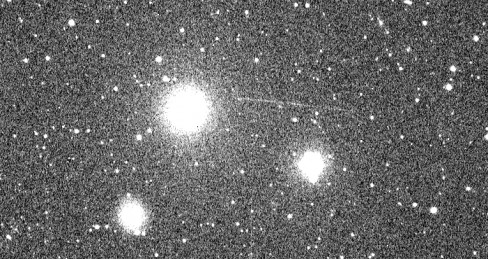An asteroid the size of a double-decker bus skimmed past the Earth on Friday (January 27), after being first spotted on Wednesday, in what has been described as one of the closest observed near misses.
Called 2012 BX34, the asteroid was 11 meters in diameter (36 feet) and passed Earth at 59,044 km (36,750 miles), bringing it closer to our planet than the Moon.
The Earth and 2012 BX34 crossed paths at about 3:30 pm GMT (10:30 AM EST).
The Minor Planet Center’s (@MinorPlanetCtr | Facebook | Google+) Gareth Williams told the BBC that while it might sound large a double-decker sized asteroid was relatively small. He expects that if the asteroid’s and Earth’s orbits were to intersect again it would safely burn up in the atmosphere.
“Objects of that size generally break apart in the upper atmosphere due to the tremendous forces acting on them due to deceleration. Most of the material will burn up so that all that will fall to Earth are a few smallish meteorites, fist or football sizes” he said.
When discovered on Wednesday initial estimates suggested that it would pass as close as 20,000km to Earth.
It was the Catalina Sky Survey which first saw the asteroid last week. The Catalina Sky Survey was established to discover objects travelling near Earth: including ones that could endanger life should they enter the atmosphere.
While not dangerous, astronomers were eager to catch a glimpse of the asteroid as it approached. The Remanzacco Observatory in Italy (@comets77) said on their blog on Friday that while harmless 2012 BX34 was notable for it’s proximity to Earth, saying, “this is one of the closest approaches recorded.”
Melbourne based Peter Lake remotely recorded this video of the flyby in New Mexico on Friday
According to NASA an asteroid would need to be about 140 meters (460 feet) to cause significant damage on entering the Earth’s atmosphere.
The Earth has been threatened by such objects in the recent past. In November 2011 asteroid 2005 YU55 measuring about 400 meters (1,300 feet) passed Earth at a distance of 324,900 meters (201,900 miles), the closest observed approach by such an asteroid in over 25 years












